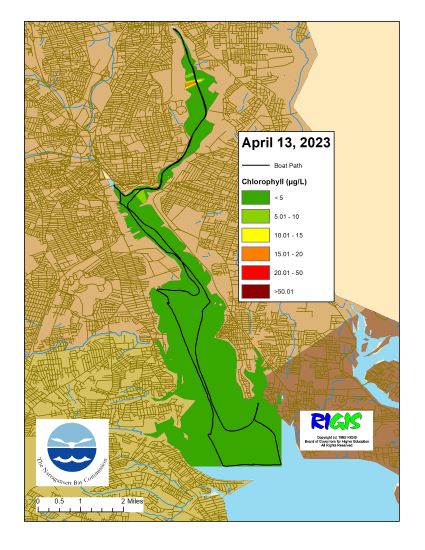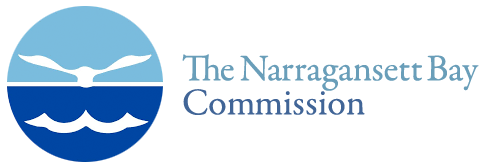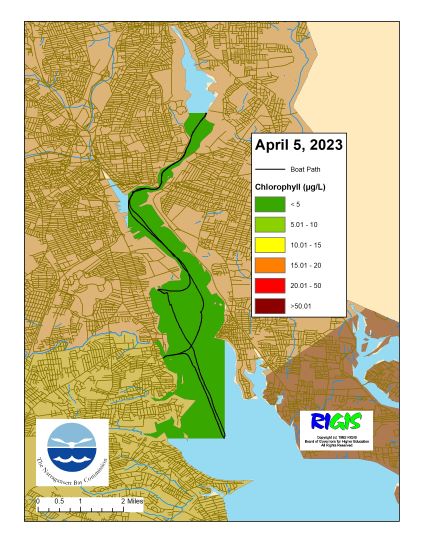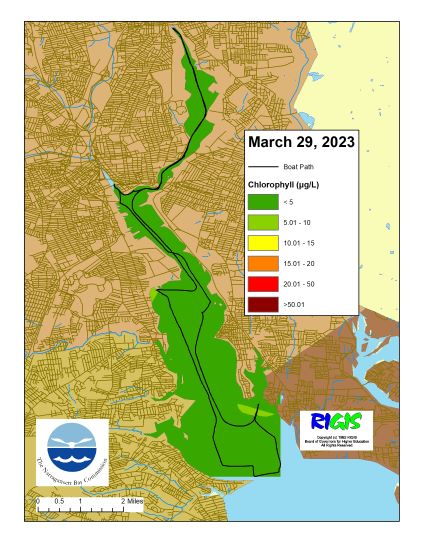Nutrient samples were collected from six bay stations and 15 local and border river stations on April 5th, 2023. Most bay stations were sampled at the surface only; one station, Edgewood Shoal, was sampled at the surface and bottom. In the five days prior to sampling, there was 0.5 inches of rainfall recorded at T.F. Green.
Among the river stations sampled, the highest total nitrogen (TN), total dissolved nitrogen (TDN), and dissolved inorganic nitrogen (DIN) were observed at Ten Mile River at Central Ave. The TN, TDN, DIN were 2,300 ppb, 2,000 ppb, and 1,727 ppb, respectively. The lowest TN was observed at Moshassuck River at Higginson Ave as 500 ppb. The lowest TDN and DIN were observed in the duplicates at Palmer River at Route 6. The lowest TDN and DIN were averaging 404.5 ppb and 92.4 ppb, respectively.
Among the bay stations sampled, the highest surface nitrogen concentrations were observed at Pawtuxet Cove. The TN, TDN, and DIN were 1,200 ppb, 990 ppb, and 847.3 ppb, respectively. The lowest surface TN (722 ppb) was observed in one of the duplicate samples collected at Edgewood Yacht Club; the duplicate was higher at 740 ppb. The lowest TDN and DIN were observed at Pomham Rocks as 361 ppb and 241.5 ppb, respectively. Chlorophyll a concentrations at the bay stations have increased (averaging 3.4 ug/L over all sites) since the March 22nd sampling event. The maximum result (6.13 ug/L) occurred at India Point Park.
Data from additional sampling dates (typically every two weeks) are pending analysis and writeup.



